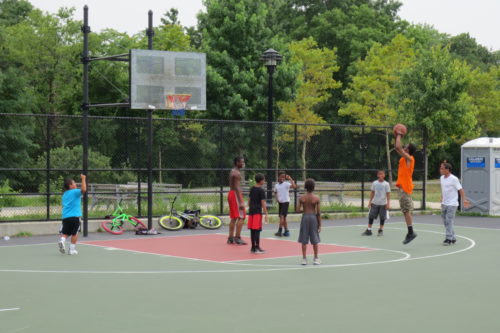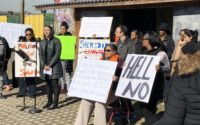
Two new comprehensive assessments of open space, the Brownsville Open Space Index and the Southern Boulevard Open Space Index, paint a picture of neighborhoods that have serious challenges facing their parks, but also a deep history of community organizing to combat inequity.
Ultimately, Brownsville failed 10 of the 14 open space benchmarks. Southern Boulevard failed 8 of the 14, rising to 11 out of 14 when Crotona Park, which many residents have difficulty accessing, is excluded. Benchmarks include total amount of open space, access, tree canopy and overall maintenance.
According to the City’s own standards neither neighborhoods have enough open space, and what does exist is often hard to get to. When residents arrive at their parks they can often expect to find cleanliness and overall maintenance to be sub-par. Neighborhoods with child asthma rates more than twice that of the citywide rate have few trees to combat air pollution. Some neighborhoods are seeing their hard-fought open spaces threatened by increased density and large scale state infrastructure projects. And even long-overdue improvements come at a cost.
“Quality open spaces are important for all New Yorkers, but particularly in areas where parks are suffering from years of neglect,” said Lynn Kelly, Executive Director of New Yorkers for Parks. “These communities have responded with clear and comprehensive plans for what they need from their open spaces, and with this data their advocacy will be even stronger. These reports also present an opportunity for the City to continue its fantastic work on park equity, and to building more livable neighborhoods in every corner of every borough.”
Both reports offer user-friendly, actionable recommendations about how local advocates, elected officials and agencies might increase and improve open space in these communities.
The Southern Boulevard study recommendations include:
- Support the community’s visioning for the Bruckner Sheridan de-commissioning
- Expand the Community Parks Initiative to capitally renew neglected parks
- Provide increased wayfinding and access to local waterfront parks
- Ensure funding for maintenance support is adequate for existing and in-construction parks
- Increase programming and organized activities in parks
- Increase funding for forestry services inside and outside parks
The Brownsville study recommendations include:
- Increase programming in parks, especially for young people
- Increase NYPD engagement with community-based agencies and focus on increasing youth access to open spaces
- Pair NYCHA infill development with improvements to NYCHA open spaces
- Increase funding to renovate the pool at Betsy Head Park
- Increase funding for maintenance and programming
- Direct funding of Governor Cuomo’s Vital Brooklyn to maintenance of Brownsville spaces
- Strongly encourage public open spaces in private construction projects
“I always encourage New Yorkers to speak up, talk to their elected officials and make their needs known. These reports help do just that,” said New York City Council Member Barry Grodenchik, Chair of the Council’s Parks and Recreation Committee. “I’m working to ensure that as the City changes and grows, every New Yorker has access to great parks. When residents are informed and empowered, they can bring about incredible change in their communities and get the kinds of parks and open spaces they need.”
In 2010, NY4P developed the Open Space Index methodology, which is based on a set of NYC-specific benchmarks against which we measure open space maintenance, access, variety and environmental sustainability, generating data on the neighborhood’s strengths and needs.
You can find all of our Open Space Indices on our Research Library.
